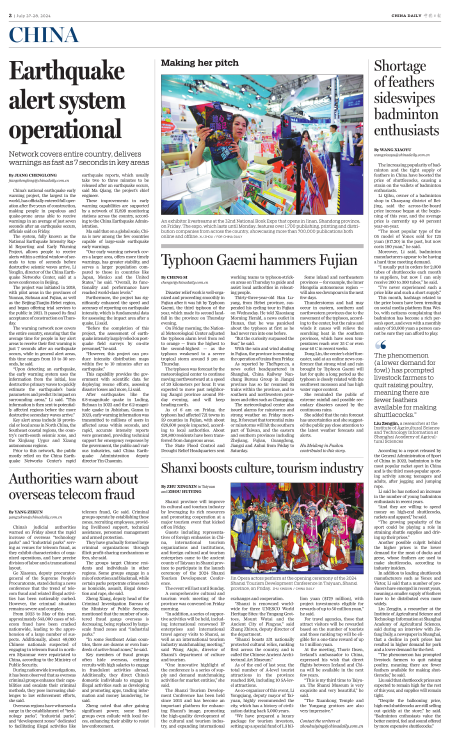
The increasing popularity of badminton and the tight supply of feathers in China have boosted the price of shuttlecocks, causing a strain on the wallets of badminton enthusiasts.
Li Qihu, owner of a badminton shop in Chaoyang district of Beijing, said the across-the-board price increase began at the beginning of this year, and the average price is currently up 40 percent year-on-year.
"The most popular type of the 05 model of Yonex sold for 125 yuan ($17.20) in the past, but now costs 180 yuan," he said.
Moreover, Li said, badminton manufacturers appear to be having a hard time meeting demand.
"I usually put in orders for 2,000 tubes of shuttlecocks each month to suppliers, but now I can only receive 200 to 300 tubes," he said.
"I've never experienced such a price hike and such a short supply."
This month, hashtags related to the price boom have been trending on social media platform Sina Weibo, with netizens complaining that badminton has become a rich person's sport, and even with a monthly salary of 20,000 yuan a person cannot be sure they can afford to play.
According to a report released by the General Administration of Sport of China in 2022, badminton is the most popular racket sport in China and is the third most-popular sporting activity among teenagers and adults, after jogging and jumping rope.
Li said he has noticed an increase in the number of young badminton enthusiasts in recent years.
"And they are willing to spend money on high-end shuttlecocks, rackets and apparel," he said.
"The growing popularity of the sport could be playing a role in straining shuttle supplies and driving up their prices."
Another possible culprit behind the higher prices is the lower demand for the meat of ducks and geese, whose feathers are used to make shuttlecocks, according to industry insiders.
In addition to leading shuttlecock manufacturers such as Yonex and Victor, Li said that a number of producers have emerged in recent years, meaning a smaller supply of feathers have to be distributed even more widely.
Liu Zengjin, a researcher at the Institute of Agricultural Science and Technology Information at Shanghai Academy of Agricultural Sciences, said during an interview with Jiefang Daily, a newspaper in Shanghai, that a decline in pork prices has resulted in higher demand for pork and a lower demand for the fowl.
"The phenomenon has prompted livestock farmers to quit raising poultry, meaning there are fewer feathers available for making shuttlecocks," he said.
Liu said that shuttlecock prices are expected to remain high for the rest of this year, and supplies will remain tight.
"Despite the ballooning price, high-end shuttlecocks are still selling out quickly at the store," he said. "Badminton enthusiasts value the better control, feel and sound offered by more expensive shuttlecocks."
wangxiaoyu@chinadaily.com.cn

